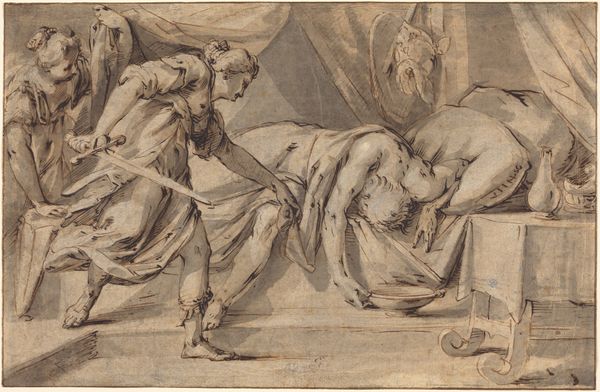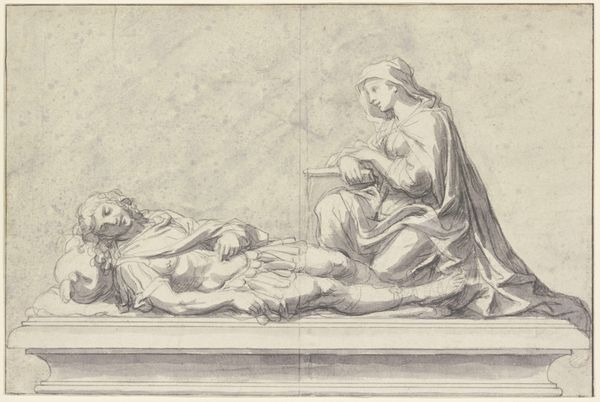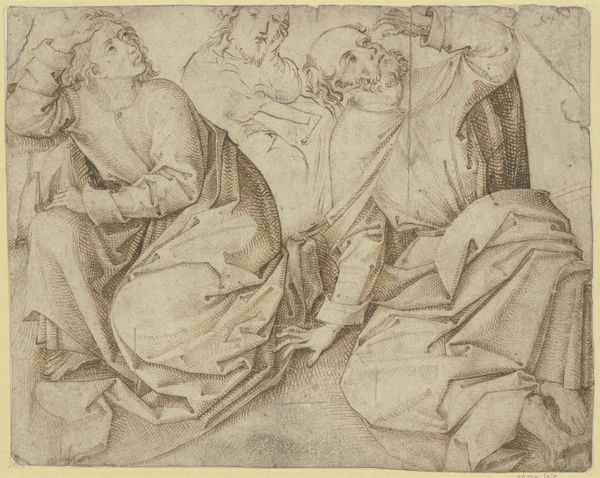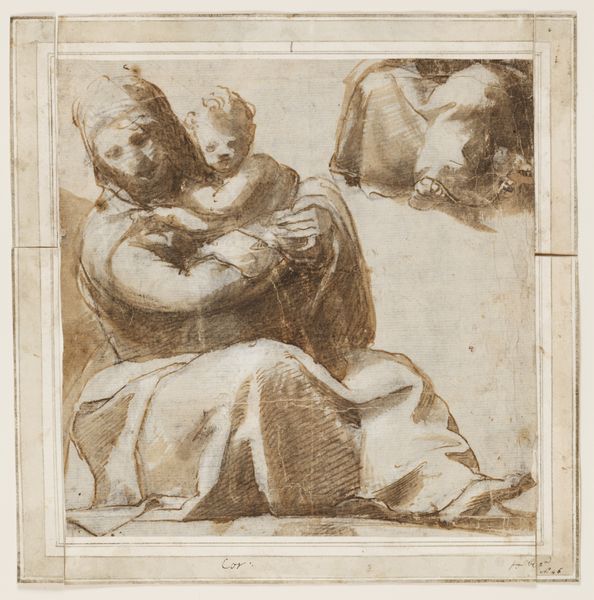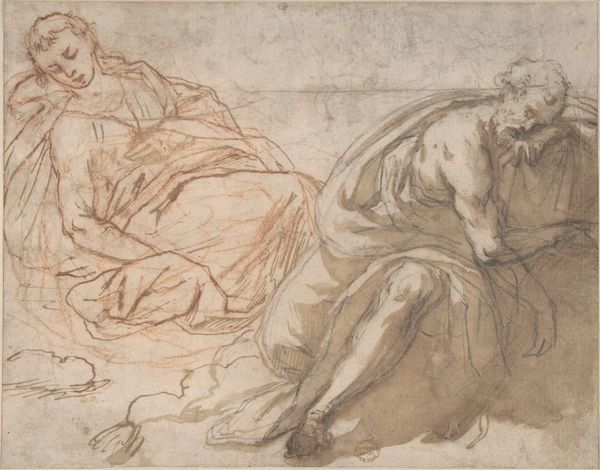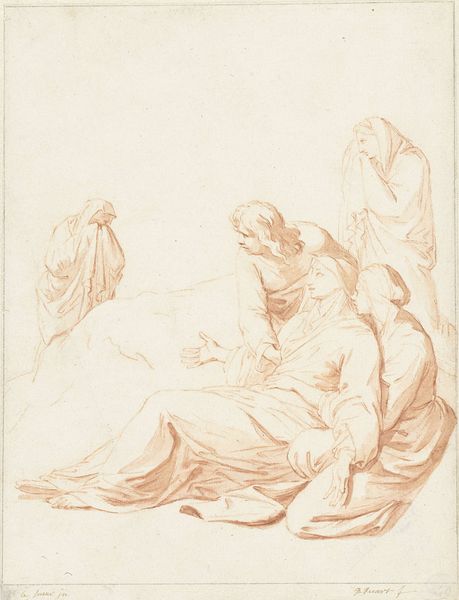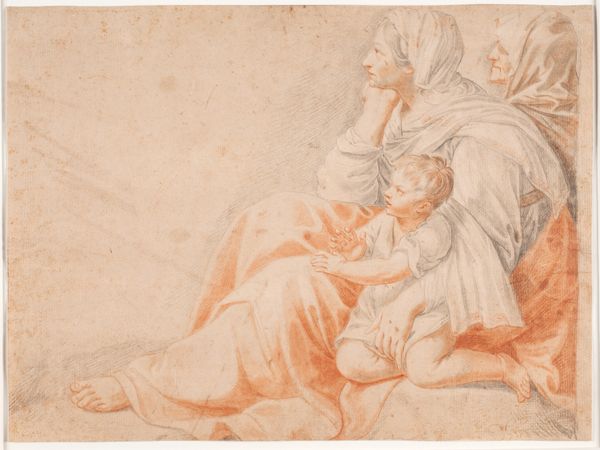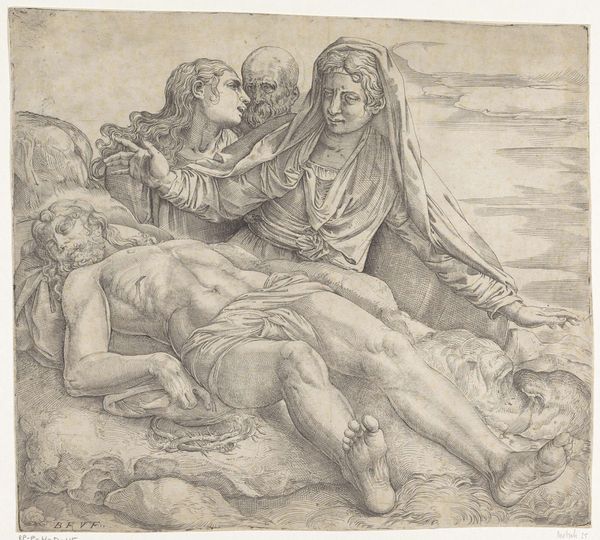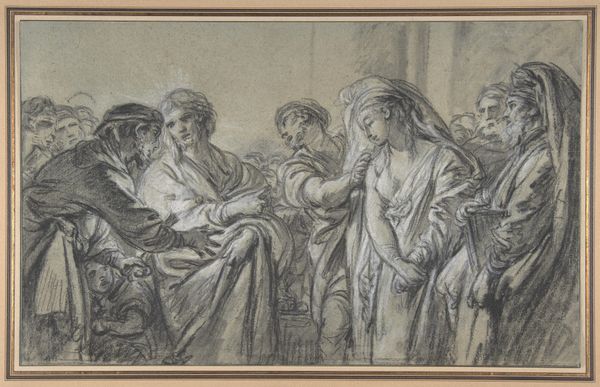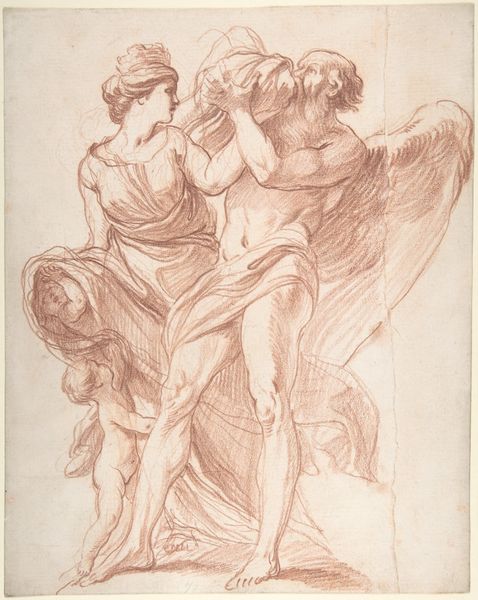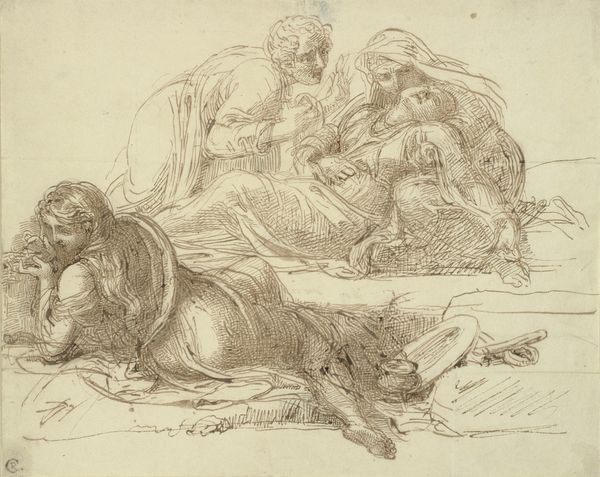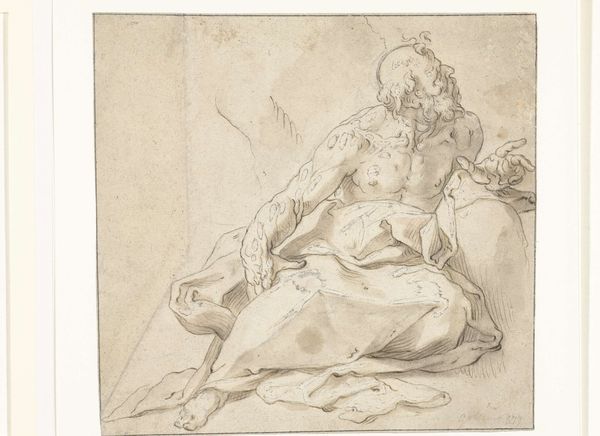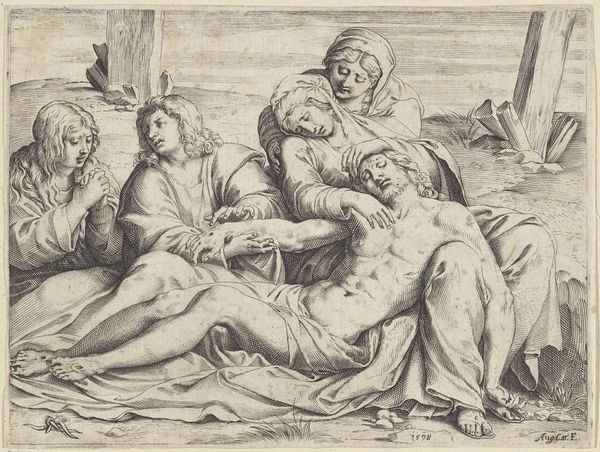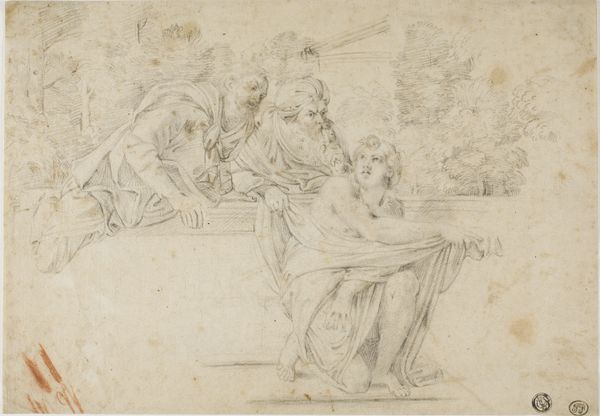
drawing, pencil
#
pencil drawn
#
drawing
#
baroque
#
pencil sketch
#
figuration
#
pencil drawing
#
pencil
#
portrait drawing
#
academic-art
Dimensions: height 170 mm, width 328 mm
Copyright: Rijks Museum: Open Domain
Curator: Before us we have a pencil drawing by Charles Le Brun, dating from approximately 1630 to 1690, entitled "Sarcofaag met daarop twee figuren," which translates to "Sarcophagus with Two Figures." It is held here at the Rijksmuseum. Editor: It has a really mournful air. It reminds me of old engravings illustrating Greek myths or biblical tragedies. Something about the soft pencil lines against the stark backdrop. It gives this impression of the timelessness of sorrow. Curator: Absolutely. Le Brun, a leading figure in the French Baroque, often tapped into classical antiquity. The figures reclined upon what is clearly a sarcophagus is reminiscent of ancient Roman funerary monuments. You can see a classical composure even in the delicate rendering with soft shadows and dynamic composition, typical of his work. Editor: You can tell the person who is lying down has deceased... Maybe it is a drawing for the tombstone for a lost love or relative. The body language speaks volumes. One figure is reclining as though their bones are tired and all they wish to do is grieve. And this action seems intentional. The drape, the details of sadness. All quite thought out. Curator: I see that you also immediately interpreted the pose to suggest the inherent action to convey the intensity of mourning. It does seem intended for something of considerable artistic significance; as with Baroque sensibilities, art should stimulate passions, move you beyond simple narrative illustration, and perhaps to be inspired. Editor: Exactly, you can sense the weight of emotion conveyed so deftly by the artist. I suppose I'm drawn to how such a simple medium such as the pencil is used with an intensity capable of exuding these emotions, and it does this centuries later, so it speaks to the enduring ability for visual forms to communicate across different audiences, irrespective of what has been lost through translation and history. It remains accessible, a message in a bottle still floating. Curator: Well said, with art history it isn't always obvious why the artist produces something, or how it can make its way into the cultural subconscious. This makes the interpretation endlessly fascinating. Editor: I agree. In a piece like this the cultural imprint, the sense of visual symbolism and metaphor are lasting gifts.
Comments
No comments
Be the first to comment and join the conversation on the ultimate creative platform.
